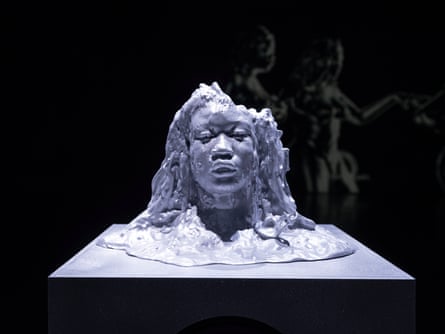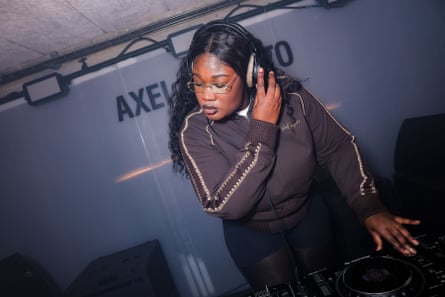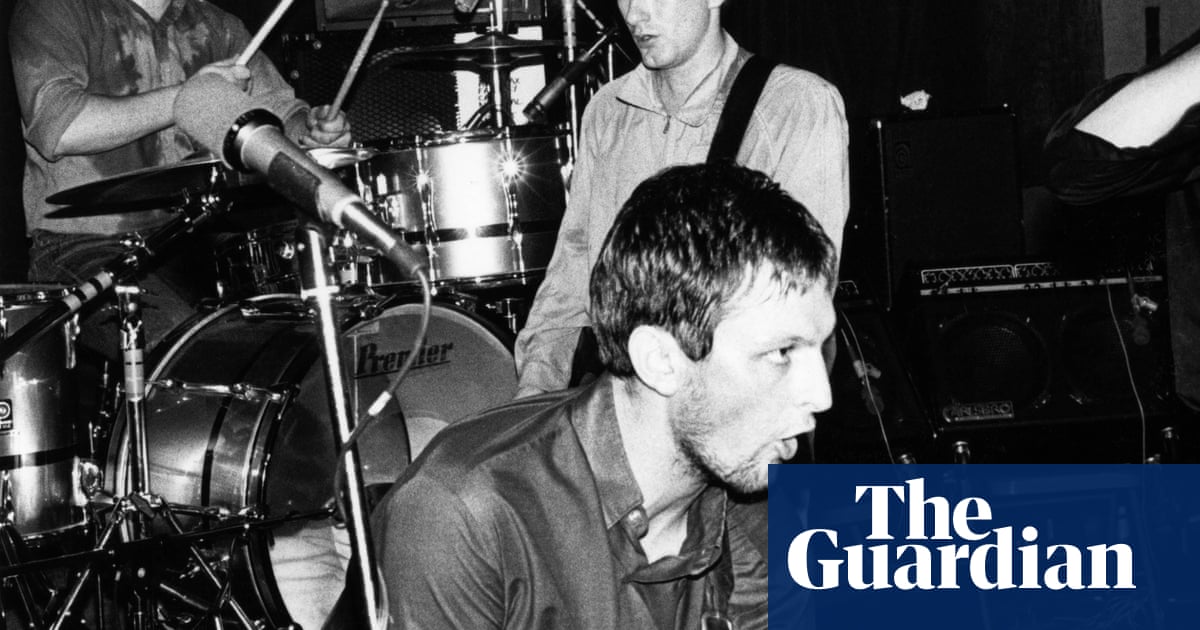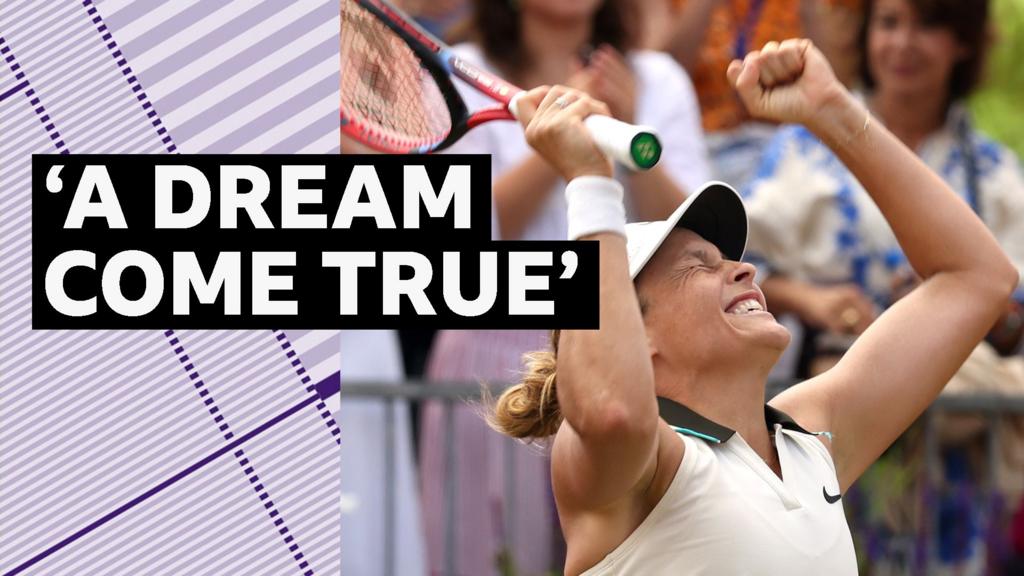‘When I was a girl at high school,” says Christelle Oyiri, “we didn’t talk about plastic surgery. Now it’s normal for 18-year-olds to talk about what kind of lip-fillers they’re going to have. Something extraordinary has happened over the past 10 years.”
What has changed? It’s not simply about keeping up with the Kardashians, though Oyiri recognises that the reality TV sisters have revolutionised the desires of some. “Kim Kardashian,” she says, “made it fashionable for women to want to look like how I and other black women look naturally because of genetics.”
The bigger picture for Oyiri is something of primary concern to any visual artist: the power of the gaze. “We are seeing ourselves and being seen more than ever. That is what digital culture does. The gaze is omnipresent. Not just the gaze of others, but also the internalised gaze.”
Oyiri, who is talking to me from her Paris studio via video call, says she often thinks about her mother and grandmother. “At my age, they weren’t seeing themselves as much as I see myself. Today, how could you not be body dysmorphic?”
The 33-year-old Parisian artist and DJ explores these vexed concerns in a multimedia installation entitled In a Perpetual Remix Where Is My Own Song? She made this for the new Infinities Commission at The Tanks in London’s Tate Modern. In the gallery’s basement, Oyiri’s bronze sculptures have been mounted on sound systems, each one representing the artist in a different guise.

One sculpture is called Raw, depicting Oyiri naked but modestly clutching her breasts. A second, called Surgery, depicts her with legs toned, abs sculpted, hands on hips, pose defiant, as if a physical makeover has given her a confidence boost. A third, called Mutant, shows Oyiri still naked but with little horns peeping from her forehead. This upgraded Oyiri comes with cloven hooves, a monstrous tail spooling from her coccyx and a diabolical gaze. It’s as if she’s refashioned herself as an avatar for some Tolkienesque video game. In a fourth, called Data Liquid, Oyiri’s head is apparently in the process of being dematerialised by some toxic wind. An allegory, perhaps, for how our human essences risk being destroyed to feed machine-learning AIs.
“My art is inquiry-driven,” Oyiri explains. “I didn’t want to have surgical procedures, but to inquire what happens to us when we stage and correct our images.”
In a sense, what Oyiri is doing in her art is not new. When she was born, in the Parisian suburb of Nogent-sur-Marne in 1992, a few miles across the French capital a feminist artist called Orlan was undergoing a series of cosmetic operations because she believed surgically changing her body could be a powerful work of art. “My goal was to be different, strong – to sculpt my own body to reinvent the self,” Orlan told me when I interviewed her for the Guardian in 2009.
So, from 1990 to 1995, the woman born Mireille Suzanne Francette Porte underwent nine plastic surgery operations, intending to rewrite western art on her own body. One operation altered her mouth to imitate that of François Boucher’s Europa, another altered her chin to look like that of Botticelli’s Venus and a third involved two little implants – usually used to enhance cheekbones – on either side of her forehead like little horns. Perhaps the horns Oyiri sports in Mutant are little nod to Orlan, whose work she admires. That said, Oyiri’s art hardly sees cosmetic surgery as liberatory, as Orlan seems to have done.
One gets a sense of what is at stake for Oyiri with another element of her installation. Behind the speaker stacks that pulsate with electronic music (including Squarepusher’s 8-bit computer classic from 1997 Journey to Reedham) is a vast video backdrop including footage from black strip clubs filmed in the American south. What interested Oyiri about these clubs is that they are both places of seeming self-realisation but are also places where, as Oyiri sums it up: “How women make a living depends on male gaze and satisfying the male gaze.”
She adds: “We always change ourselves under the gaze of the other.” That’s to say societal norms and other people’s desires are always at play when we perfect our digital selves with Instagram filters or submit ourselves to Brazilian butt lifts.
Oyiri’s Tate Modern installation has come about because she won the inaugural Infinities Commission, designed to “showcase the limitless experimentation of contemporary art”. One reason why she’s such a worthy recipient is that she is from what could be called the margins. “Where I came from, being an artist as I am now was not a thing,” she says. Of Ivorian and Guadeloupean heritage, her creative heroes were musicians, not artists. She looked up to black divas like Chaka Khan, Whitney Houston, Lil Kim and Nicki Minaj. “They’re the women I wanted to emulate. They’re my icons.”

Her mum was a nurse at a private hospital, while her dad – “one of those three jobs dudes” she says – worked as a guard at Parisian museums. “I used to explore the collections with him. That’s why my first dream was to become an archaeologist.”
after newsletter promotion
She was catalysed into creativity not by art schools or the canon of western art, but by hip-hop, electronic music and Caribbean dub pioneers such as Lee “Scratch” Perry for whom quotation and appropriation are key creative elements. Oyiri makesan interesting point in her Tate Modern installation: it’s not just musicians who quote, sample, remix and appropriate – that’s pretty much what happens when we undergo cosmetic surgery or create digital personae.
In her late teens Oyiri started DJ-ing under the name Crystallmess. But for the influence of a now defunct New York-based collective and magazine DIS, she might have remained a turntablist rather than what she has become – a multidisciplinary artist working in film, sculpture, music and writing. “There were certain themes I found difficult to explore in music such as colonialism, consumerism and body images that I saw other artists and writers in the DIS collective working on,” she says. “What I learned from these guys is that you don’t have to choose between being a DJ or a visual artist. They created the cross-disciplinary and commercial community I benefit from. You can be multidisciplinary and have it all.”
In only a few years, Oyiri has created a dizzying array of installations and multisensory artworks, exhibiting in Europe and the US. For her 2023 solo show in Zurich, she explored her Caribbean heritage with an installation called Venom Voyage, in which the office of a faux travel agency was built. It boasted the chilling business slogan “spreading the travelling bug since 1972” and had its walls emblazoned with paradisiacal images of Caribbean heritage.
Venom Voyage showed Oyiri fulfilling her childhood dream of becoming an archaeologist in a way she might not have imagined. She dug into the Caribbean’s paradisal glamour to unearth what lies beneath. “I used to go on holiday as a kid to Guadeloupe and I loved it there,” she recalls. “What I wanted to explore was how our images of paradise conceal the opposite. If you ask someone from the UK or France or Spain, all of which are former imperial nations, what paradise looks like they will say some Caribbean island, right? But I wanted to draw attention to the opposite – beneath this paradise is really crazy wealth disparity. And it’s not really paradise: in Guadeloupe pesticides used in farming cause cancer. Paradise and poison are right next to each other.”

I ask Oyiri what it’s like to be a black woman of Caribbean ancestry exhibiting at Tate Modern. After all, it was Caribbean sugar that made this temple to art possible – and you don’t have to look too far into the history of sugar to find enslaved people working in plantations. True, neither Tate nor Lyle were slave owners, but as the Tate’s own website puts it, both were connected to slavery in “less direct but fundamental ways”.
“It is very strange for me,” Oyiri replies. “I have been made aware. Throughout my life, I have had to kind of reverse-engineer all this history.” She mentions Kara Walker – the great African American artist, whose work similarly explores colonialism, race and identity – as one of the people who helped her reverse-engineer herself. Walker’s monumental 2014 sculpture A Subtlety or the Marvellous Sugar Baby, which depicted a white sphinx with an African woman’s features, was displayed at a derelict Brooklyn sugar refinery, in homage to “the unpaid and overworked Artisans who have refined our Sweet tastes from the cane fields to the Kitchens of the New World on the Occasion of the demolition of the Domino Sugar Refining Plant”. Four years later Walker’s 13-metre tall working fountain Fons Americanus was installed in Tate Modern’s Turbine Hall looking like, as Bidisha put it in her Guardian review, “a monumental rebuke to the evils of empire”.
How do you follow that? “I don’t! I don’t dream of competing with what Kara Walker did!” Oyiri laughs. “But whatever I do is kind of inspired by the conversations she created. I started to look at the Caribbean in a different way. What was paradise becomes something very different indeed. You just have to look in a different way.”

 8 hours ago
2
8 hours ago
2










 English (US)
English (US)